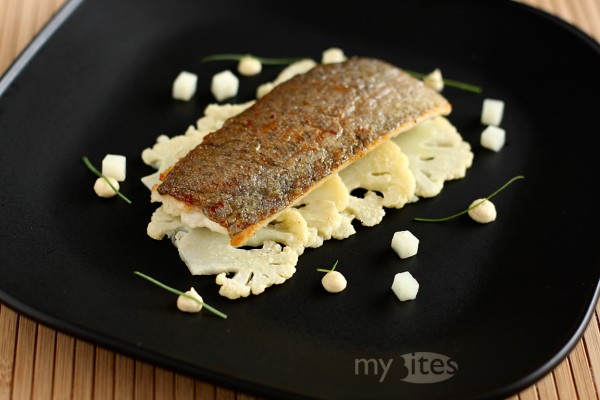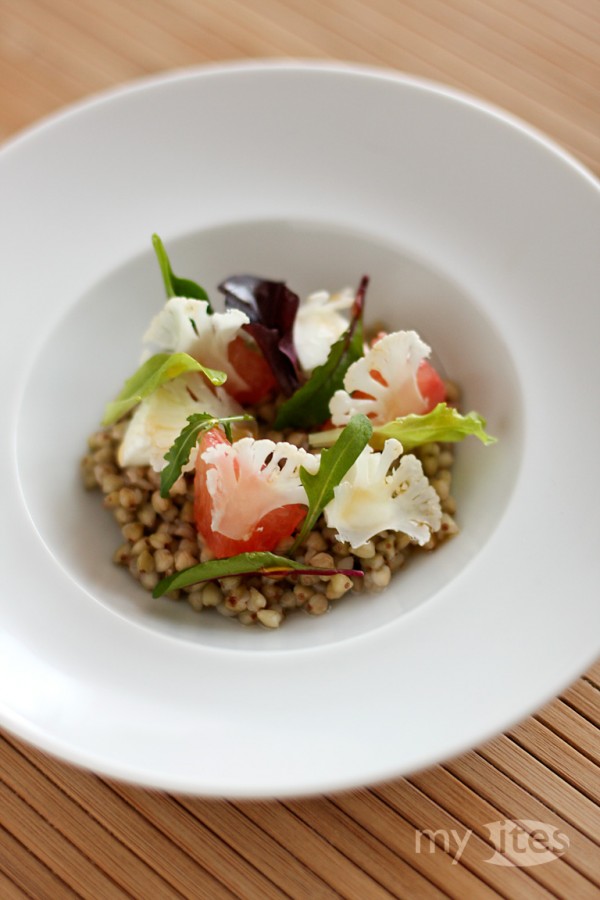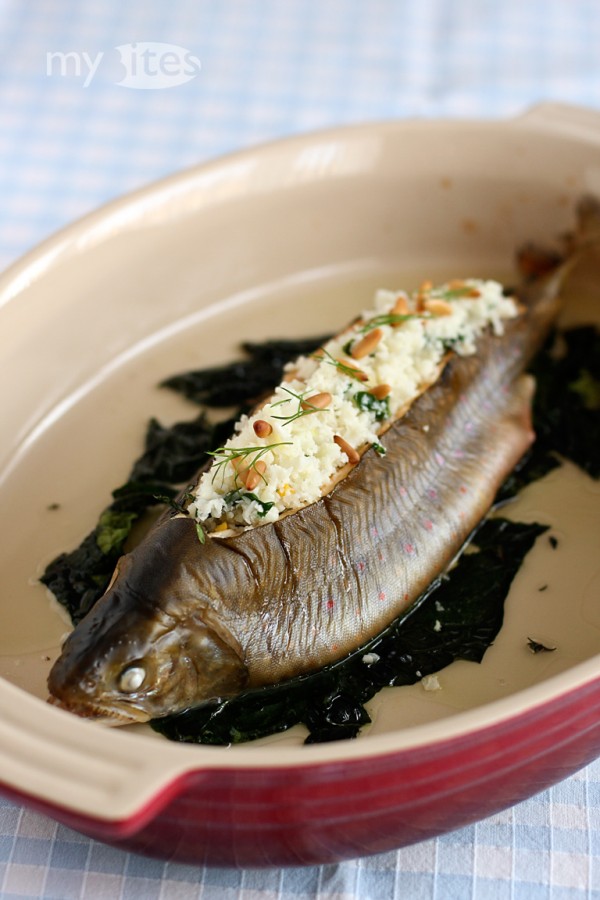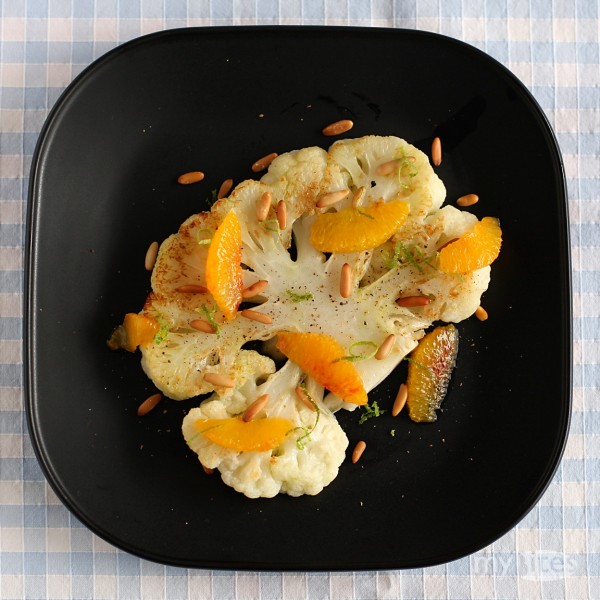Cauliflower is a vegetable that can be stored quite well, and therefore it is available throughout almost the whole year. Actually, the real season for cauliflower – at least in Europe – is about right now. During spring and summer fresh cauliflower can be sourced from local farmers in white, green, orange or purple colors. Usually, cauliflower is picked into florets and cooked or steamed tender, or it is sometimes prepared as a creamy soup. In this recipe I cooked the cauliflower slightly different than usual and served it with a crispy roasted trout fillet.
Tag Archives: cauliflower
Buckwheat with Mozzarella, Grapefruit and Raw Cauliflower
Recently, I’ve been using the Foodpairing Explorer even more than usual. I created many interesting combinations, but with most of them I’m still thinking about the optimal ratios, preparations and presentations. The ingredient combination for this fast and simple vegetarian dish is based on a combo list too, which I linked together recently on Foodpairing.
Char with Cauliflower Couscous
Have you ever wondered why fish in Germany – and almost everywhere in Europe – is gutted with a cut at its belly? It’s straightforward to some extent, because all innards are located in the belly, and by removing them along with the gills, the fish can be kept refrigerated 3-4 days longer. In China I noticed that fish are usually kept alive in restaurants and killed to order. An even more interesting experience was to see that all fish was cut open and gutted from its back, so the bellies of the fish were always completely intact. I liked this back filleting method simply because the possibilities of stuffing and serving a whole fish. Unfortunately, at the local market in Erlangen they don’t sell any fish alive and all of them are already gutted via a cut along their bellies. So my filleting from the back basically resulted in two fillets held together by the head and the tail of the fish, but made the seasoning of the whole fish a lot simpler and more precise.
Roasted Cauliflower with Orange, Mint and Pine Nuts
It’s very hard to find really bloody oranges. At the market here in Erlangen two different kinds of blood oranges are being sold: one half-blood orange called “Tarocco” and a full-blood orange named “Moro”. In the last years and during this winter as well, they were both pretty pale inside, containing only a few red pigments – if any at all. I usually try to determine the bloodiness of an orange by the color of the skin, but unfortunately a red pigmented skin doesn’t guarantee a deep red interior. Since I don’t know any better method, finding really red blood oranges remains a kind of lottery. The statistics for this current winter season are pretty disillusioning: only 1 of 20 blood oranges was truly deep red inside. I planned to use red blood oranges for this vegan dish too, but unfortunately the oranges I bought had yet again only very few red spots. Irrespectively of their color, they fulfilled their means of use by adding sourness and freshness to the dish.



